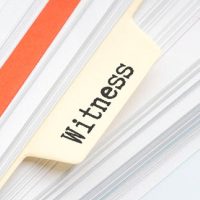Factors That Can Lead To Mistaken Eyewitness Identifications

Eyewitness identifications are crucial in the investigation and prosecution of crimes. Many people believe eyewitness testimony is among the most reliable types of evidence in criminal cases. However, the truth is that eyewitnesses make mistakes, some of which can have devastating consequences. For example, mistaken eyewitness identifications are a leading cause of wrongful convictions. According to the Innocence Project, nearly 70% of DNA exonerations have involved eyewitness misidentification. Imagine being sent to jail because an eyewitness insists they saw you commit a crime. That would be devastating.
So, why do identification mistakes happen? Below we look at some factors that can lead to mistaken eyewitness identifications.
Memory Issues
Firstly, our memory does not operate like a video recording. After a person witnesses an event, that event is not necessarily replayed on a later date exactly as it happened. Memories undergo changes. Memories can be distorted or degraded. After a person witnesses an event, they might forget, reconstruct, update and distort the information in their mind they believe to be true.
Secondly, memory can be contaminated. For example, imagine a case where Witness A talks to Witness B before speaking to the police. In such a case, if Witness B tells Witness A what they remember, Witness A might end up agreeing with what Witness B says. When talking with the police, Witness A might say they saw something or someone even if it is not true.
Lineup Issues
In the identification process, specifically in a lineup, if proper procedures are not followed, it could result in an eyewitness identifying the wrong person. Even if a witness clearly remembers what they saw, their memories could be distorted during an improperly conducted identification process. The following are some practices that could result in a witness identifying the wrong person in a lineup;
- Allowing an administrator who knows who the suspect is to conduct the lineup. They may provide unintentional cues to the eyewitness about who to pick from the lineup.
- Not telling an eyewitness that the perpetrator may not appear in the lineup. If a witness is not given proper instructions, they may conclude that the perpetrator must be in the lineup, which might result in them picking someone innocent.
- Incorporating photos that stand out more than others in a photo lineup. This could result in a witness identifying the person in the picture that stands out the most as the perpetrator, even if they are not.
Racial Bias
Some people have preconceived notions that people of a particular race commit certain crimes. For example, suppose a person witnesses a crime that is often associated with Black males. In that case, they may identify a black male in a lineup as the person who committed the crime even if that person is innocent.
Questioning Eyewitness Testimony
When eyewitness testimony is involved in a criminal case, it is crucial to weigh all potential issues with such testimony. Therefore, if you’re facing allegations that involve eyewitness testimony, you should consult with a qualified attorney.
Contact a London, KY Criminal Defense Attorney
Contact our London, KY criminal defense attorneys at Cessna & George Law Firm for professional legal help if you are facing allegations involving eyewitness testimony.
Source:
innocenceproject.org/how-eyewitness-misidentification-can-send-innocent-people-to-prison/
